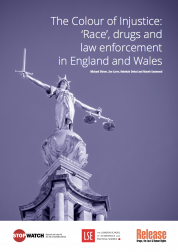This report – by StopWatch, Release, and LSE’s International Drug Policy Unit – documents the disproportionate impact that drug law enforcement continues to have on black and minority ethnic communities in England and Wales.
The Main Findings
Disproportionality has increased as the use of stop and search has declined, indicating that the remaining use of the powers is more heavily concentrated on black and minority ethnic groups. Black people were stopped and searched at more than eight times the rate of whites in 2016/17. Asian people and those in the ‘mixed’ group were stopped and searched at more than twice the rate of whites.
Stop-searches for drugs are more disproportionate than stop-searches for other offences. Black people were stopped and searched for drugs at almost nine times the rate of whites, while Asian people and those in the ‘mixed’ group were stop-searched for drugs at almost three times the rate of whites.
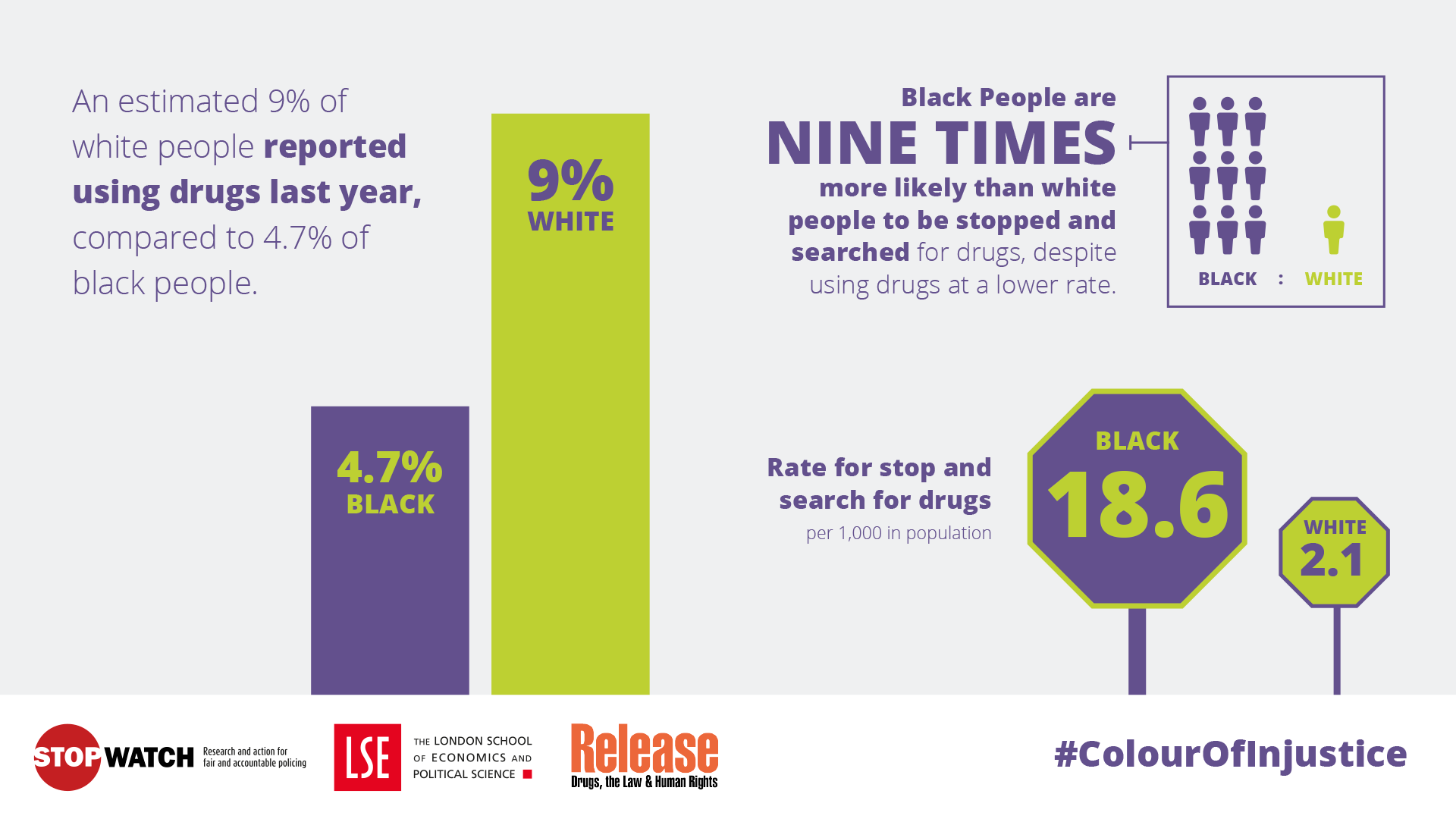
Share this image
The ‘find’ rate for drugs is lower for black than white people suggesting drug searches on black people may be based weaker grounds for suspicion than those on white people.
Since 2010/11 more than 80 per cent of drug offences recorded by police have been possession offences and more than 60 per cent have been for cannabis possession. Extrapolating from these figures indicates that more than a third of all stop-searches are for suspected cannabis possession offences (the exact proportion varies from 34 to 39 per cent depending on the year). It follows that police forces are making operational decisions to target low-level drug possession offences over other crimes.
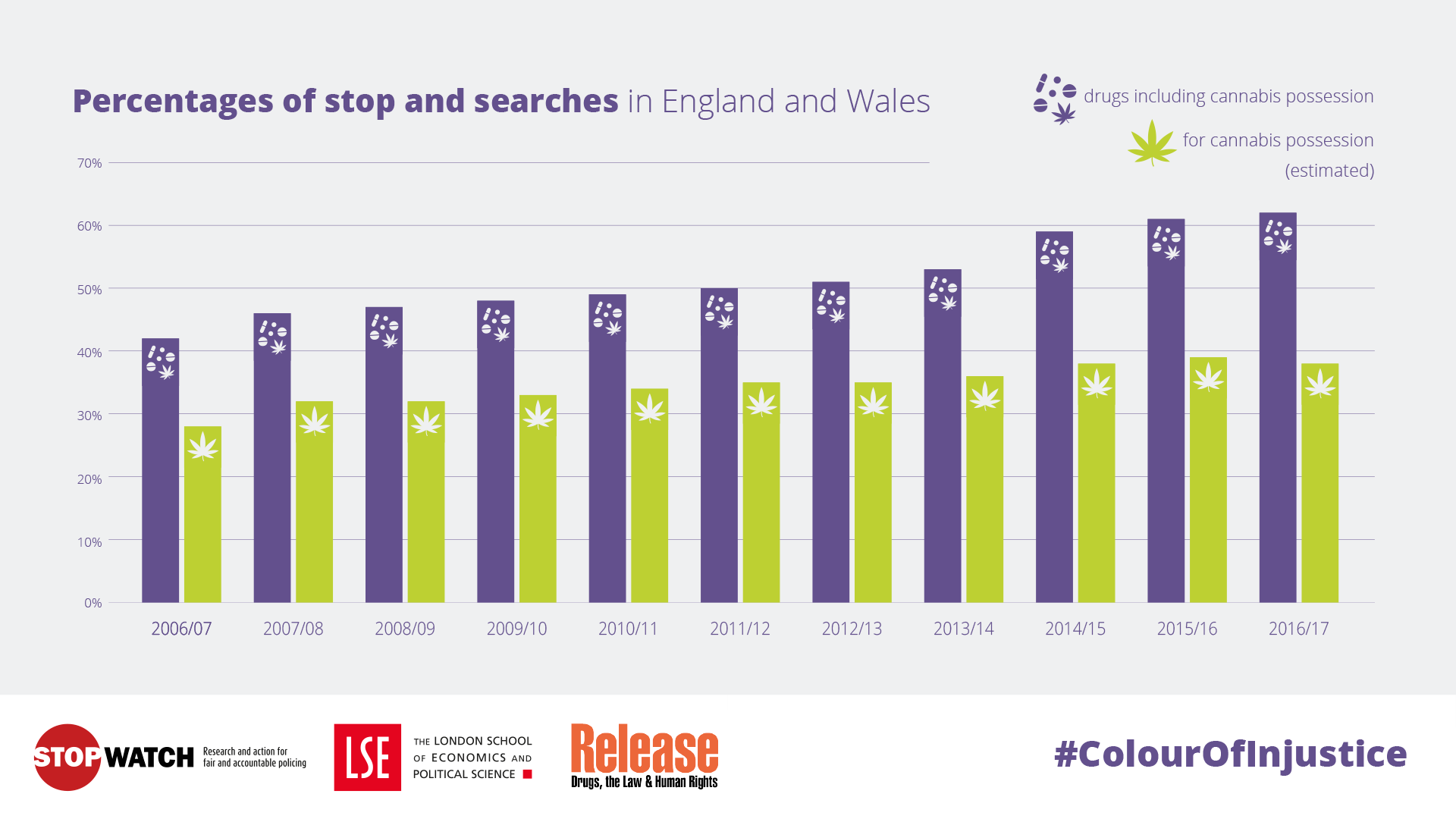
Share this image
Almost one-fifth of all arrests of black people result from stop and search, which is more than three times the proportion for white people: 17 per cent compared with 5 per cent. For drugs, 57 per cent of arrests of black people result from stop and search compared with 31 per cent for whites. These disparities suggest that the disproportionate application of stop and search is largely a function of police policy and decision-making rather than crime.
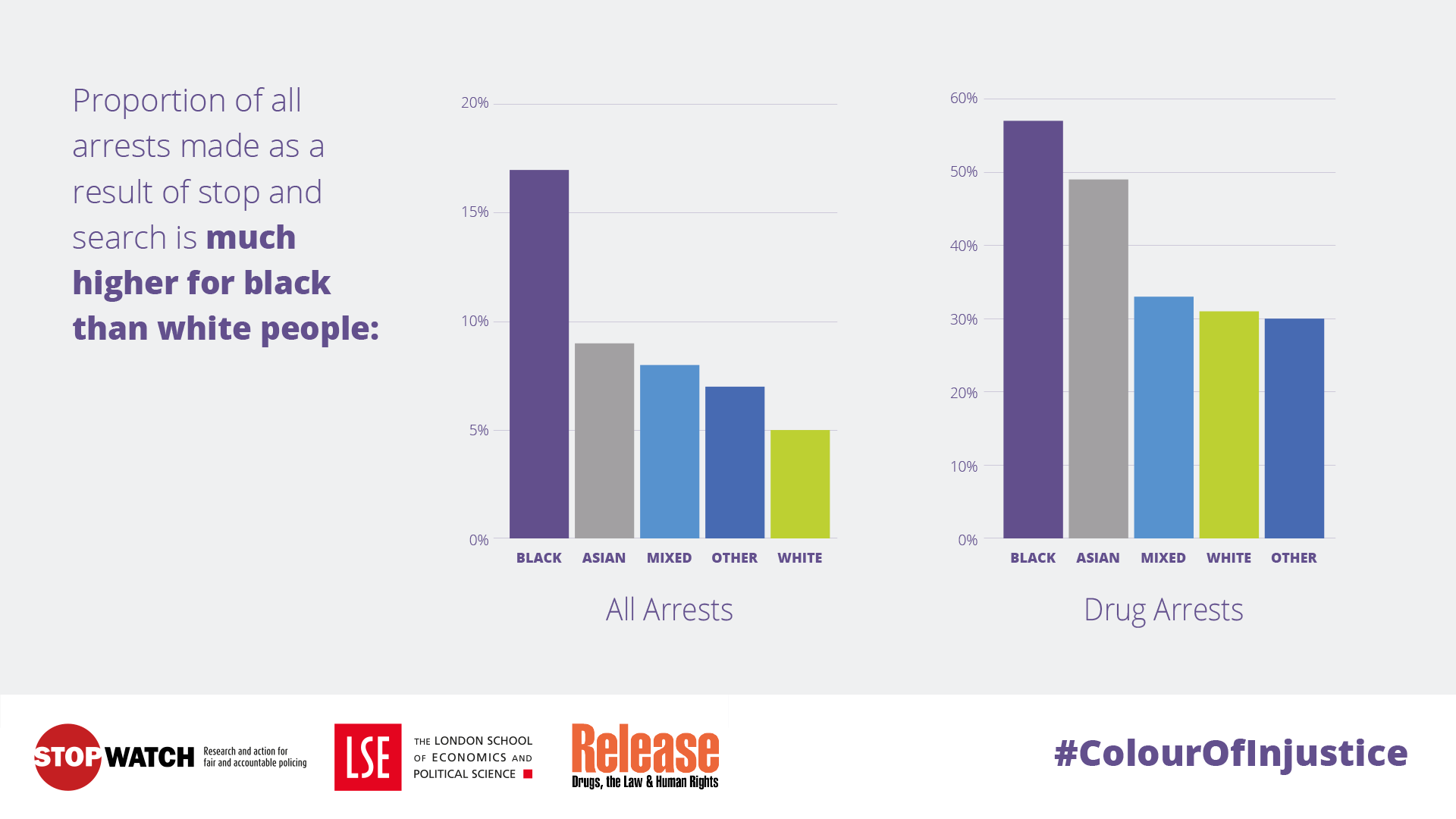
Share this image
The number of arrests from stop and search has fallen much more sharply for white than black people. Arrests from drug searches halved for white people between 2010/11 and 2016/17, but have been maintained for black people.
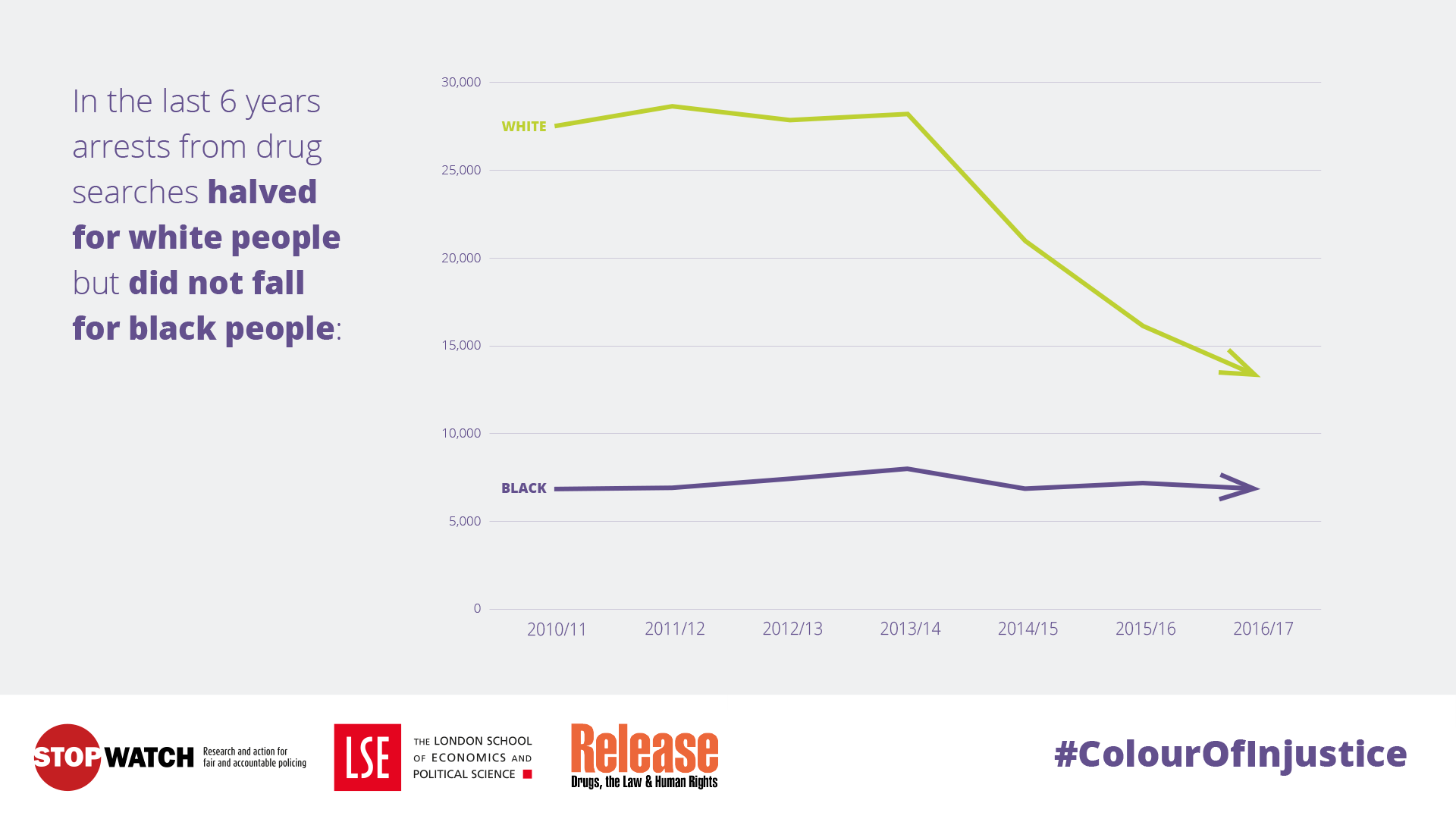
Share this image
Black and Asian people were convicted of cannabis possession at 11.8 and 2.4 times the rate whites despite their lower rates of self-reported use, providing prima facie evidence of discrimination. Black people made up a quarter of all those convicted of cannabis possession even though they comprise less than four per cent of the population.
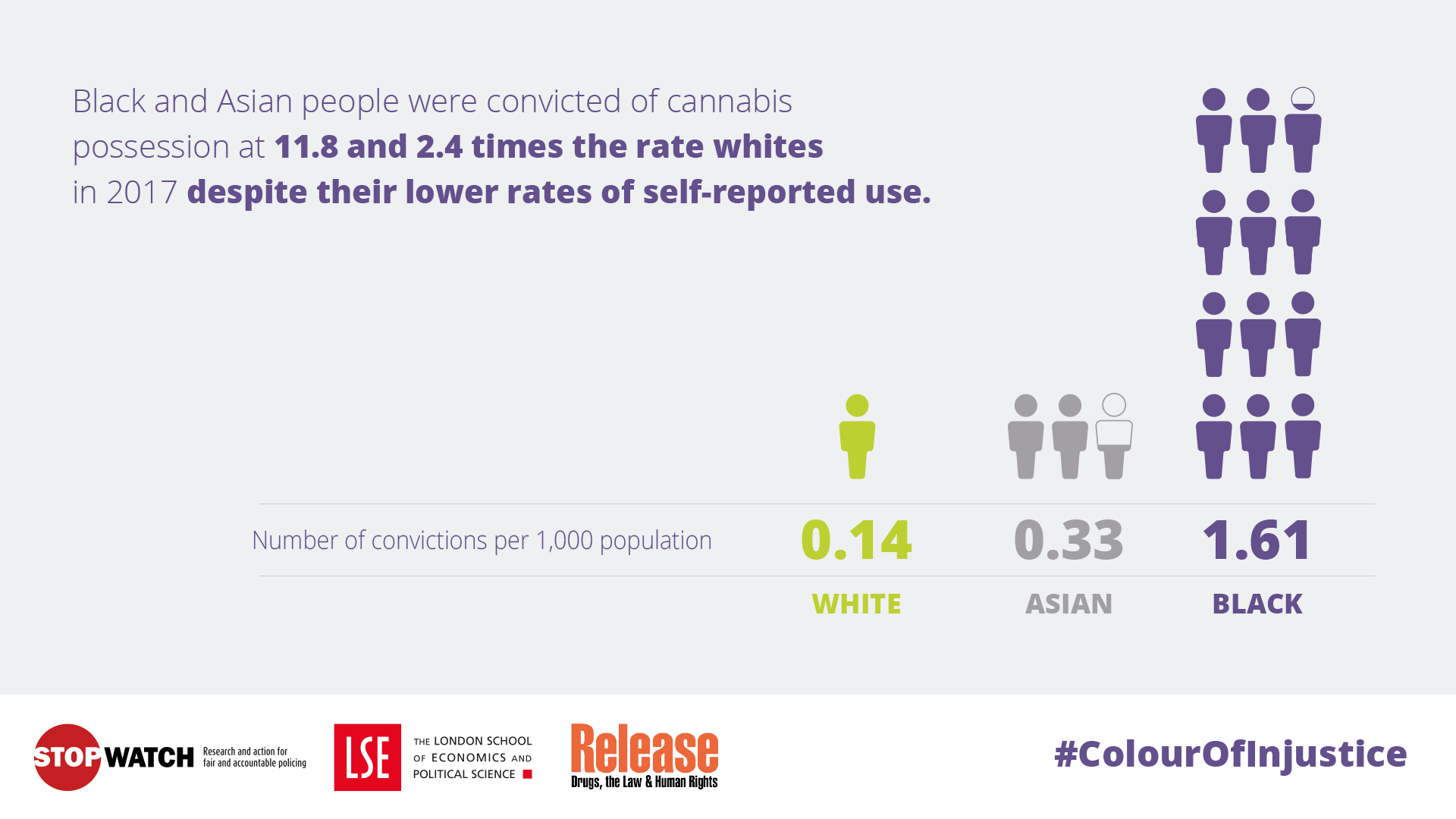
Share this image
More black people were prosecuted and convicted of cannabis possession than for the supply of Class A and B drugs combined in 2017. For white people the balance was reversed. This, to borrow a phrase, is an ‘affront to justice’ for the reasons described by former U.S President, Barack Obama, when discussing the legalisation of recreational cannabis in Washington and Colorado:
"It’s important for it to go forward because it’s important for society not to have a situation in which a large portion of people have at one time or another broken the law and only a select few get punished… Middle-class kids don’t get locked up for smoking pot, and poor kids do. And African-American kids and Latino kids are more likely to be poor and less likely to have the resources and the support to avoid unduly harsh penalties."
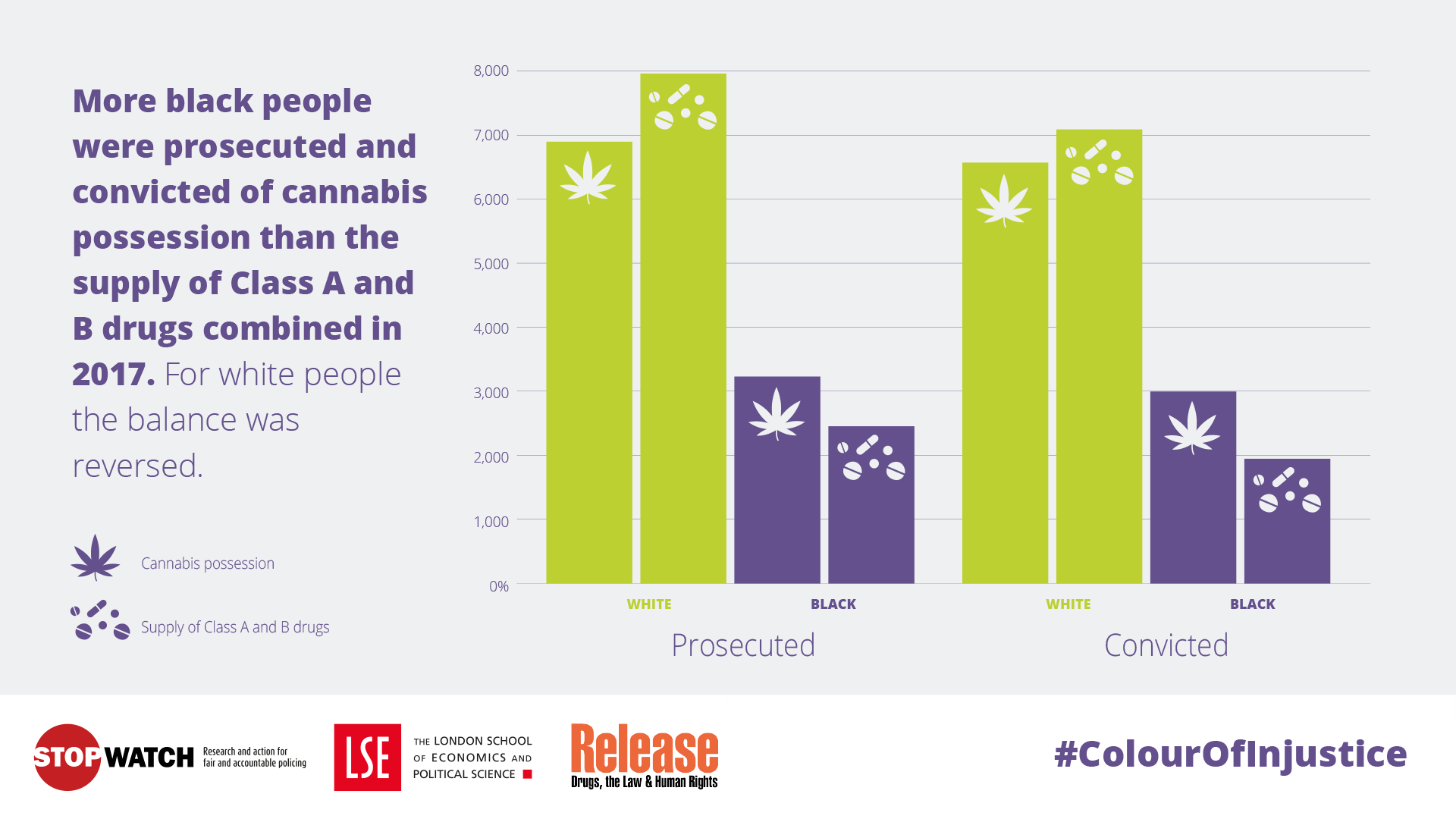
Share this image
Read the full Colour of Injustice report.
